Lighting up Lake Victoria
Renewable World has supported small scale energy projects across East Africa since 2008. Recently, we have focused on improving access to renewable energy for fishing communities in Kenya through our Lighting up Lake Victoria programme. This began in 2013 with the Comic Relief-funded ‘Renewable Energy Solutions for Lake Victoria Ecosystems’ (RESOLVE), and later, the ‘Energy Hubs Project’ since 2017.
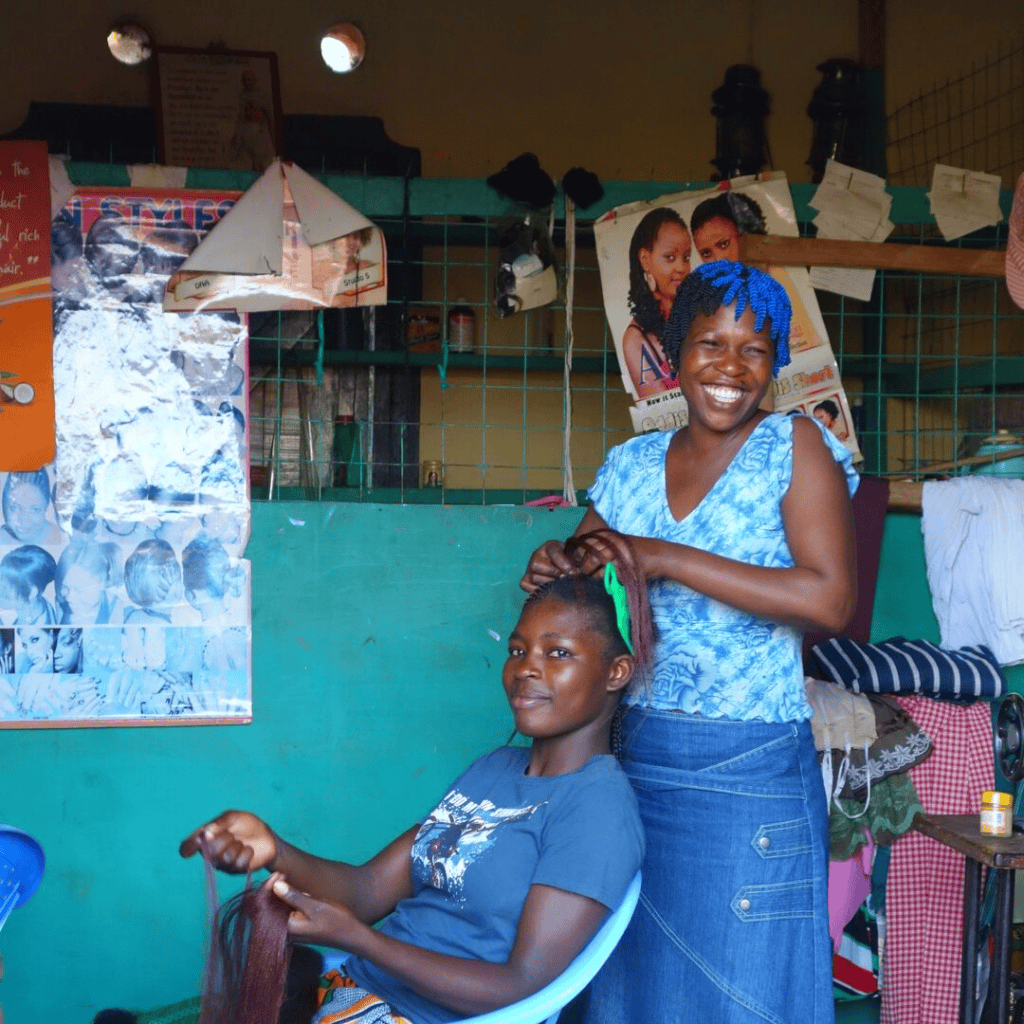
Meet Linet
Linet is part of the next generation of entrepreneurs in her village of Got Kachola. Her business is flourishing now that she is connected to the solar microgrid that takes pride of place in the centre of the community.
“Since power has come to my business, my profits have trebled,” she shared. With power, she now offers a blow-dry service, mobile phone charging, and rents part of the business space to a local seamstress.
Our Impact
![]() 7,427 people reached to-date
7,427 people reached to-date
![]() 10 renewable energy systems installed in 4 districts
10 renewable energy systems installed in 4 districts
![]() 25 kilowatts of renewable energy capacity
25 kilowatts of renewable energy capacity
![]() 242 people reached through livelihood training
242 people reached through livelihood training
![]() 72 institutions, businesses, and co-operatives reached
72 institutions, businesses, and co-operatives reached
![]() 32 tons of CO2 mitigated each year
32 tons of CO2 mitigated each year
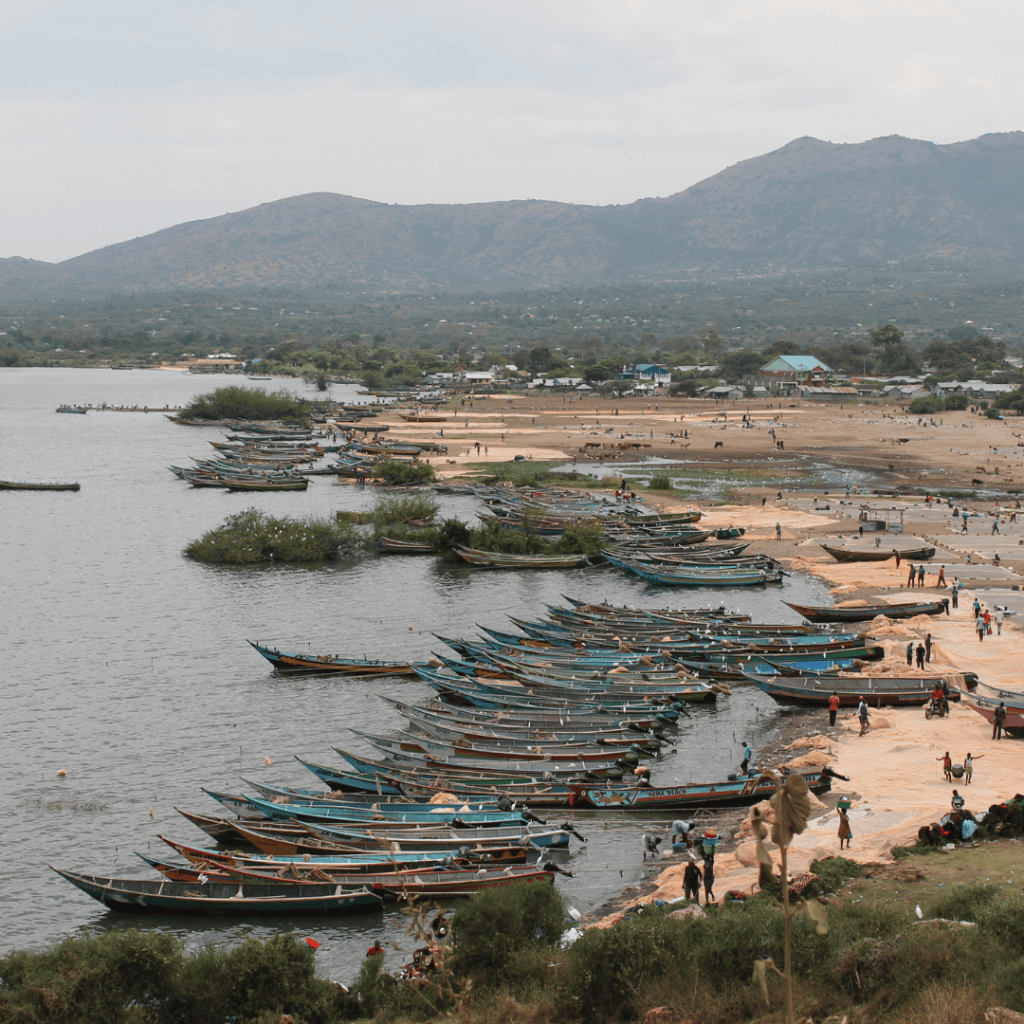
Need
Kenya ranks 142nd in the 2018 Human Development Index (HDI). As one of Africa’s basin countries, Kenya has access to the world’s largest inland fishery and the region’s largest lake by area, Lake Victoria. Despite the vast resources Lake Victoria offers, Kenya still suffers from extreme poverty. Today, it is estimated that 43% of Kenyans live on less than $1.25 a day. Energy poverty remains a major constraint to development with only 56% of households in the country having electricity, mostly in urban areas, and 86% lacking access to clean cooking facilities.

Our Actions
In the first round of action in Kenya, our RESOLVE programme provided six remote, lakeside communities with access to clean energy through community-owned solar microgrids. Through these microgrids, energy harvested from sunlight is captured, stored, and distributed as clean electricity. To aid community ownership, we helped establish six legally-registered community-based organisations, who after appropriate governance and financial training, were able to manage their renewable energy systems. As a result, 1,734 people, 64 households, and 32 businesses gained access to energy.
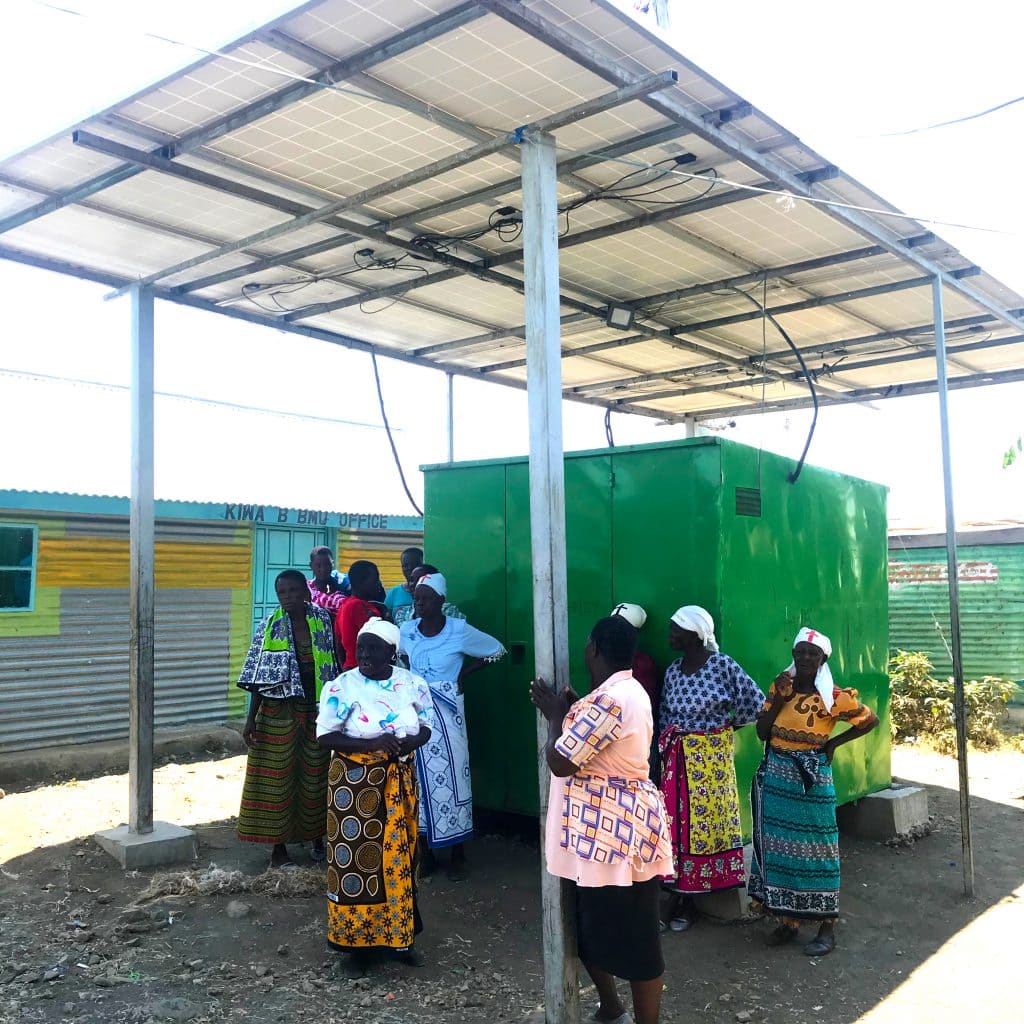
The second round of energy provision around Lake Victoria came in the form of the Energy Hubs Project. Through this project, Renewable World used its lessons learned from RESOLVE to improve programming and build new microgrids in four additional communities. Through a series of consultations, in addition to access to electricity, each community voiced the need for improved water access to make farming a viable livelihood alternative. As a result, four new microgrids were installed, complete with a water-pump, storage tank, pipework, and drip-irrigation kits in addition to household connections. This supported improved crop cultivation in each of these communities.
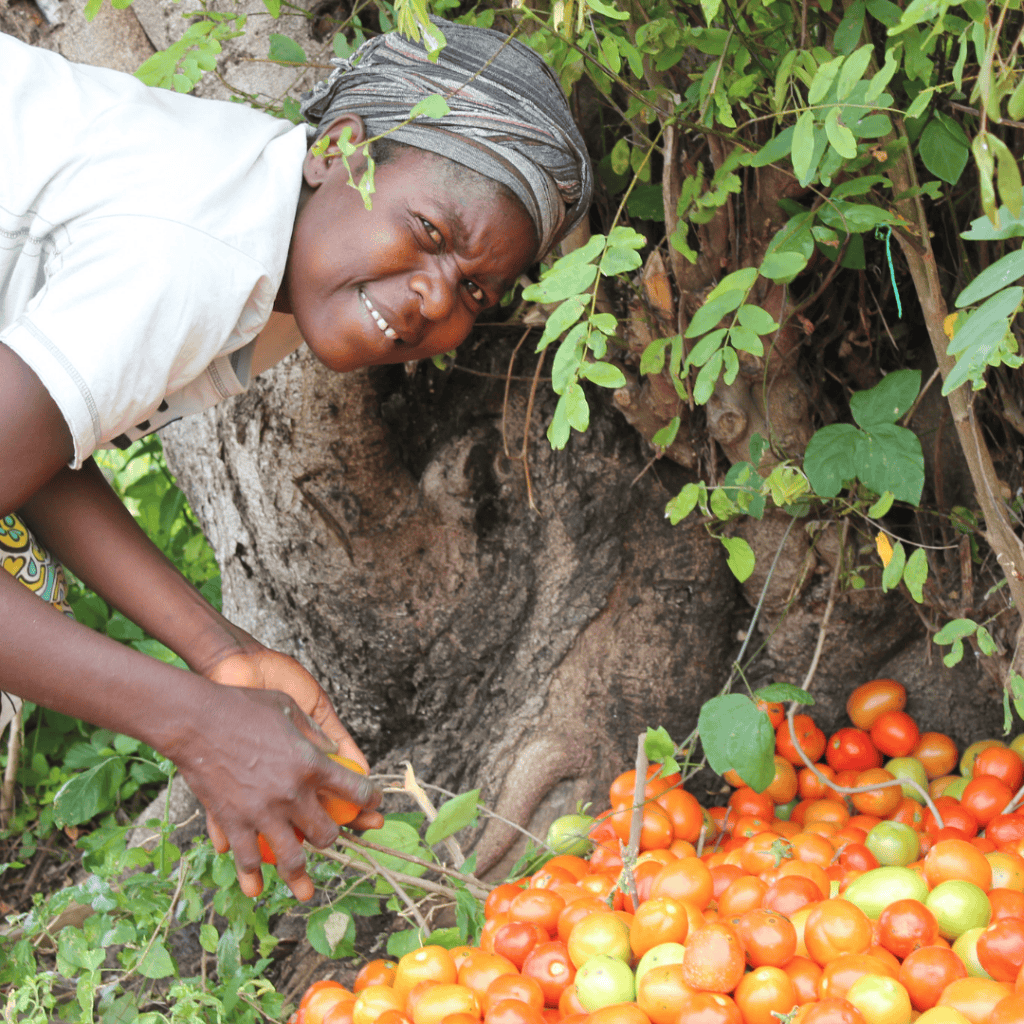
Renewable World built on the existing women’s agricultural cooperatives by providing additional agricultural training, thereby improving understanding of the best crops to grow and techniques to use, and maximising the benefits of the irrigation system. This has helped communities such as Mirunda maximise their agricultural potential. Following the installation of the irrigation system in Kiwa, the Kiwa’s Women’s Group grew an astounding 30,000kg of tomatoes in their first harvest, and now expect an additional two harvests each year, effectively giving them the ability to triple their already record-breaking yield!
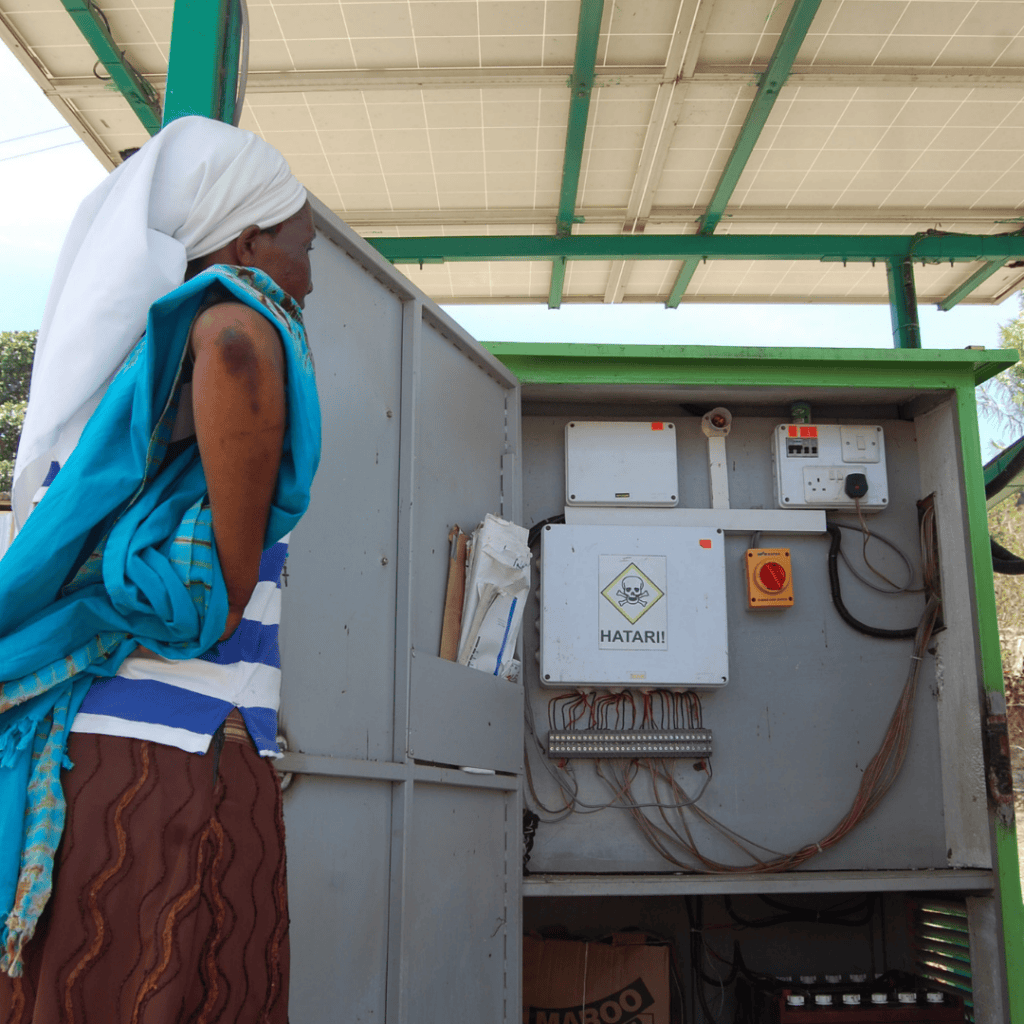
The impact of RESOLVE and the Energy Hubs Project has translated to a reduction of people’s average monthly spend on lighting by over half to 470 Kenyan Shillings (£3.41), as well as an increase in average income by 18.9%. The benefits have been in various forms, and one welcome change has been the reduction of indoor air pollution and combustion-related injury as reliance on traditional, polluting kerosene lamps has decreased, with over a quarter of beneficiaries reporting less illness or injury. Additionally, the work has helped in empowering women, keeping them front of mind in the implementation process. As a result, from the 10 community-based organisations managing the microgrids, 38% of people in decision-making roles are women.
Next Steps
Our current focus is on system optimisation and innovation within our existing microgrid communities. This includes working alongside communities to increase energy capacity and extend connections to 90 more households and microbusinesses. In addition, our work will support the establishment of additional irrigation systems and agricultural training. Lastly, in Kiwa Island, we plan on piloting an innovative solar-powered ice-making programme. This programme will involve the most vulnerable members of the community, such as female fish traders. Depending on the outcome of a post-completion evaluation, Renewable World hopes to roll this out to a further 2,450 people in 17 poor fishing communities.
Over the next few years, our broader goals include scaling our work, installing 50 solar microgrids in new fishing communities around Lake Victoria. These grids will each have a capacity of 7kW-15kW, which will power an estimated total of 4,500 households and 500 micro-businesses. By trialling new community-private sector ownership models, our target is to introduce clean, renewable energy to around 64,000 people in East Africa by 2022.
By developing bold partnerships, particularly with companies and financial institutions, we will utilise community contributions through affordable finance and enable enterprises to become equity stakeholders. The result will be less reliance on grants and subsidies, bringing community-centred renewable technology to even more people that truly need it.
Click here to read more about our work in our 10 Year Impact Report: 2008-2018.
Kenya Funders and Partners
We have chosen our strategic partners carefully to ensure we deliver impact which can be taken to scale. To find out more about our funding and implementing partners visit our partner page here.